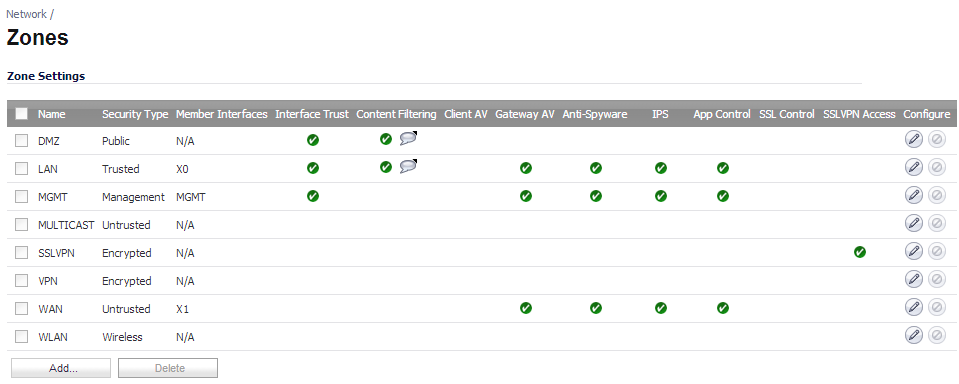A network security zone is simply a logical method of grouping one or more interfaces with friendly, user-configurable names, and applying security rules as traffic passes from one zone to another zone. Security zones provide an additional, more flexible, layer of security for the firewall. With the zone-based security, the administrator can group similar interfaces and apply the same policies to them, instead of having to write the same policy for each interface. For more information on configuring interfaces, see Network > Interfaces .
